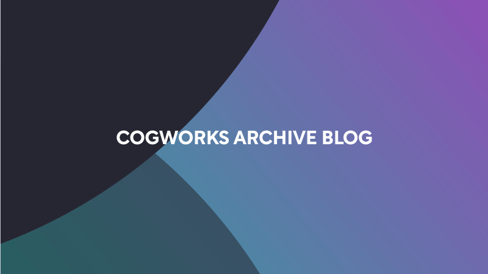What should be done when errors occur? Conduct a client retro. And when things go smoothly? Client retro!
Hello, youve stumbled into the old Cogblog archives
We've switched our blogging focus to our new Innerworks content, where tech community members can share inspiring stories, content, and top tips. Because of this, old Cogworks blogs will soon be deleted from the site, so enjoy it while you can. A few of these might refer to images in the text, but those have been deleted already sorry. Some of these subjects will return, some aren't relevant anymore, and some just don't fit the unbiased community initiative of Innerworks.
If you'd like to take on this subject yourself please submit a new blog!
Farewell Cogworks Blog 💚
You've just completed a big client-team project; what now?
You may have already formed your view on how it went, blaming yourself (or other people) in the process.
Or, you prefer not to overthink about the past, leaving the last six months of work in a cloud of dust as you move on to the next.
Whatever the outcome, mistakes can happen, leaving us disappointed in our delivery, performance, and, ultimately, ourselves, but how do we learn from our mistakes if we don't talk?
As Henry Ford says, 'The only real mistake is the one from which we learn nothing'.
What is a client retrospective in Agile?
An Agile client retrospective kick-starts the conversation and quickly addresses the elephant in the room by asking all parties, "How do you think [x/y] went?".
A retrospective (or retro) is a valuable business tool for almost any industry involved in collaborative projects, as it helps teams reflect, listen and learn from mistakes.
Agile retrospective "agendas” vary from company to company, but in essence, they always include reflective questions for teams, such as:
- What went well?
- What could be improved?
- What are we going to do about it?
Source: https://www.scrum.org
The retrospective (sometimes known as the "reflection workshop" or “sprint retrospective") is a fundamental part of the Agile software development process. These sessions are a series of constant communication and regular feedback to improve the overall quality of the final product and, just as significantly, relationships.
What does a client retrospective involve?
To run a client retrospective effectively, all who have worked on the project must be involved. In software development, this might include, at a minimum, the project manager, account manager, tech Lead and QA Lead. You don't have to be in software development to do a retro. Identify the main leads in your project and go from there.
How to run an Agile client retrospective:
1. Make a plan.
Provide participants with adequate notice to attend retrospectives, giving them time to prepare the facts about the project in question. It's a good idea to provide a minimum of 3 days' notice for a retrospective (everyone will appreciate the time to prepare).
2. Choose a facilitator.
Retrospectives are sometimes dreaded, so it's essential to dedicate a facilitator whose role is to ensure all voices are heard. A facilitator opens, guides and closes the conversation and ensures it's an entirely safe (and friendly) space where everyone can be honest.
Tip: Why not spend the first few minutes of your meeting breaking the ice? A few conversational moments could help relax all involved.
3. Dig deeper with tools.
Sometimes, what you initially perceive to be the issue is not the case.
In software development, for example, underperforming in testing might lead a team to believe there are quality assurance issues. Digging deeper during an Agile client retrospective helps teams understand that there is more to that assumption, such as not having the right time to test effectively.
In your retro, ensure that everyone shares their point of view and can quickly elaborate on their ideas. Miro is an excellent tool for remote and in-office teams, allowing them to collaborate virtually and add their comments in real-time.
Take a look at our Agile retrospective format.
4. Set objectives.
Once you've established what worked and what didn't, the next step is for everyone to create actionable points to ensure we don't fall into the same pitfalls next time.
When you set your objectives, ensure they're SMART (Specific, Measurable, Realistic, Timely) to get the best results.
Why do client retrospectives matter?
All businesses that work on client-team collaborative projects should run client retrospectives. Here are our top three reasons why:
1. Stronger processes.
By identifying the issues, clients and teams can fortify processes and move forward more vital for the next project.
.
2. Better client relationships.
Some businesses might avoid retrospectives, especially when there are a few tough pills to swallow. At Cogworks, it's in our values, to be honest, in and out of Agile retrospectives. Prioritising an open and honest culture helps to develop genuine partnerships that last.
3) Happier teams.
When something doesn't go to plan, it can make us feel negative towards ourselves or our teammates.
One of the true benefits of client retros is that it allows teams to process information, learn and let any negativity go. Cultivating a culture of accountability inspires us to be responsible and, ultimately, to do better next time.
Knowing that we're working together to produce a better product or process keeps our teams happier and healthier.
Final thoughts.
An Agile client retrospective is for everyone. If you're still unsure, why not start with a simple Agile retrospective within your internal teams?

Innerworks and Cogworks are proud to partner with Community TechAid who aim to enable sustainable access to technology and skills needed to ensure digital inclusion for all. Any support you can give is hugely appreciated.
